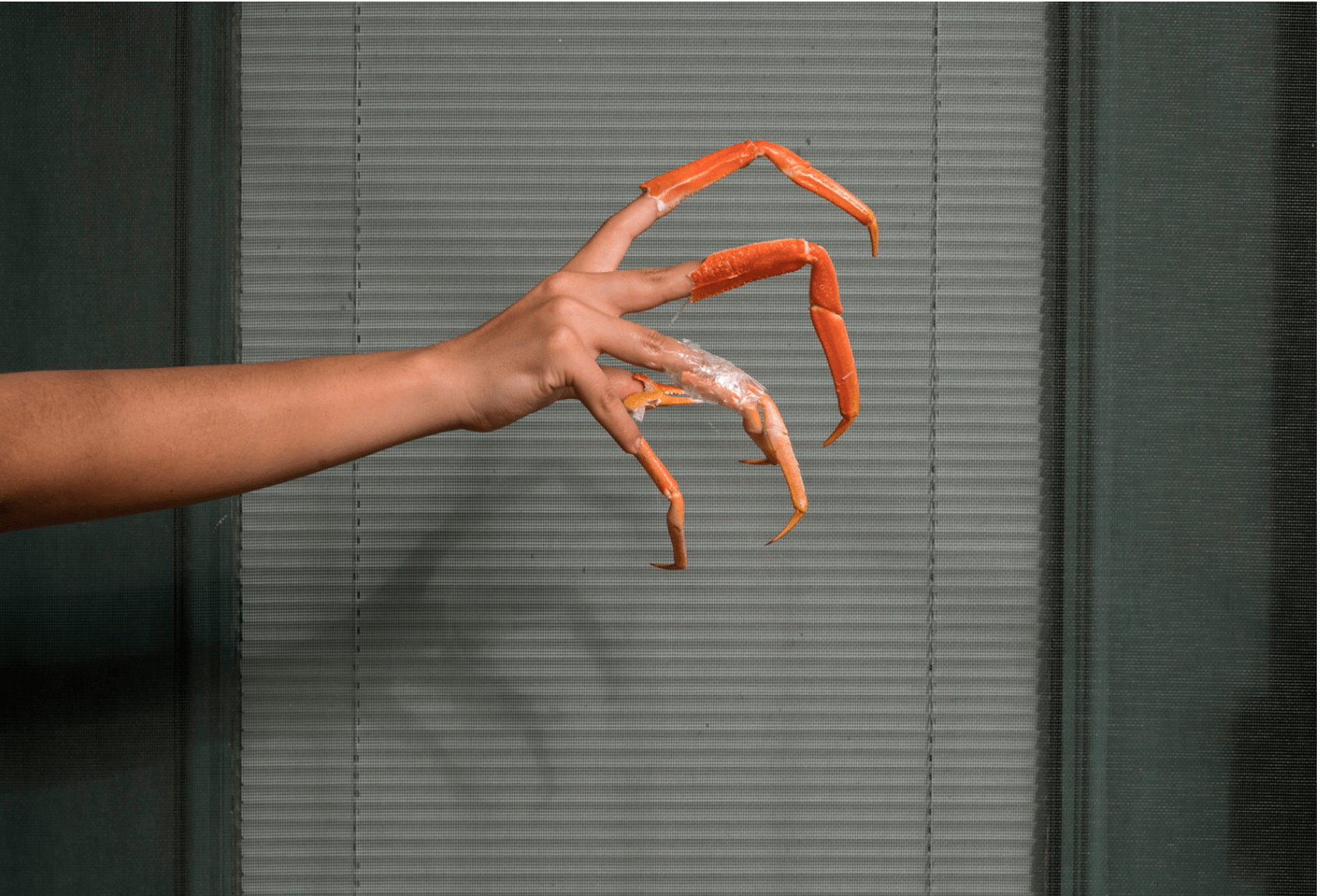

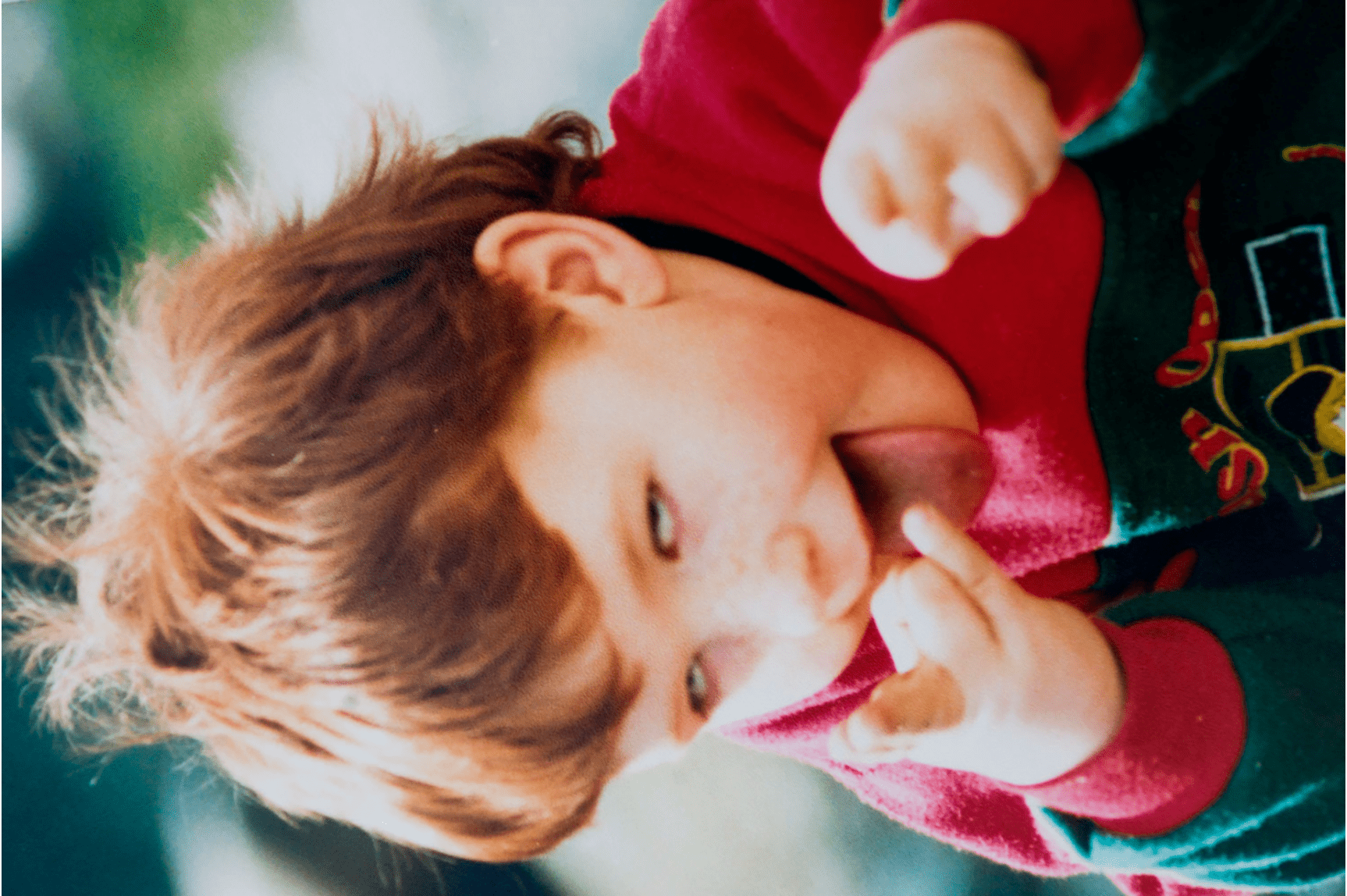
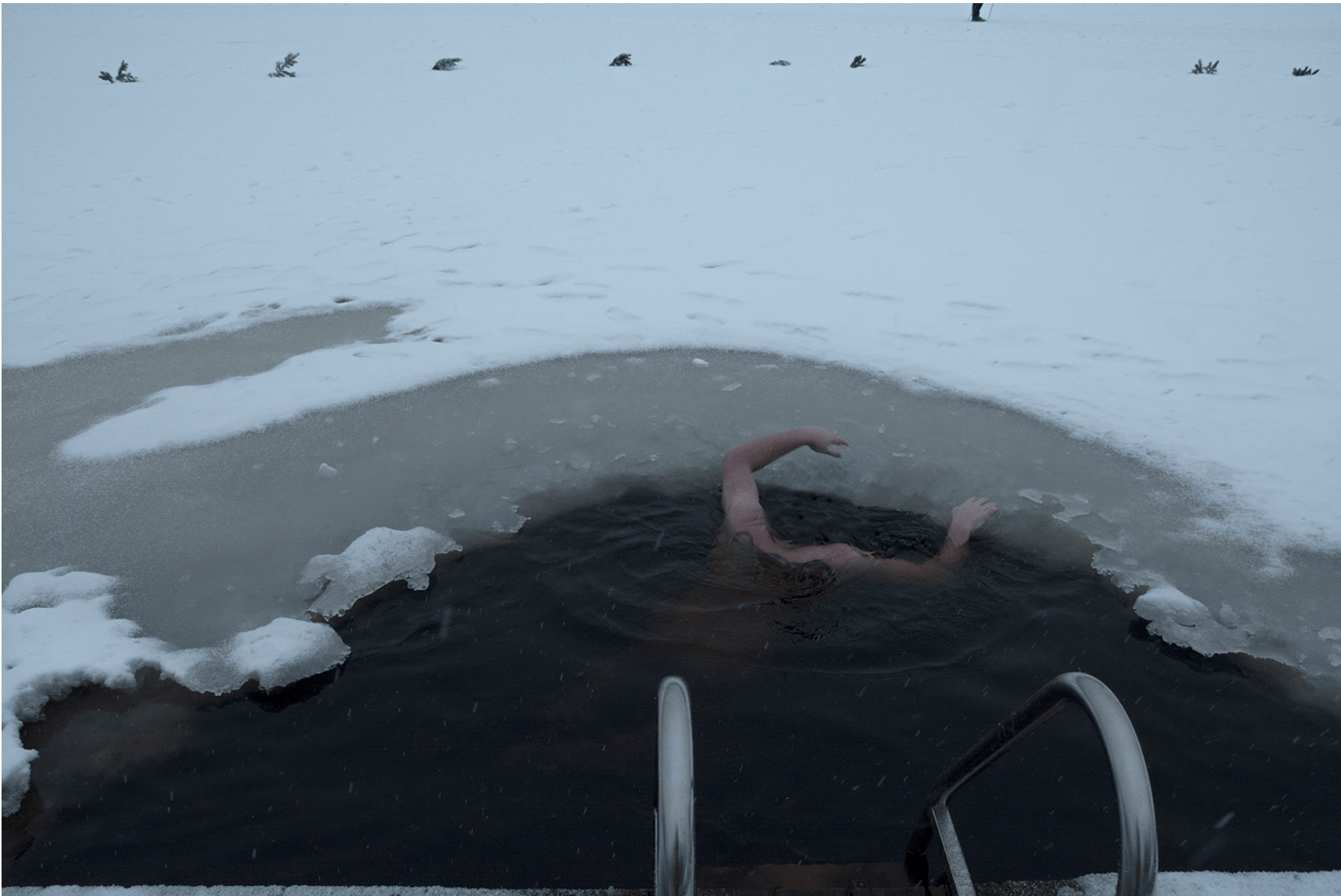
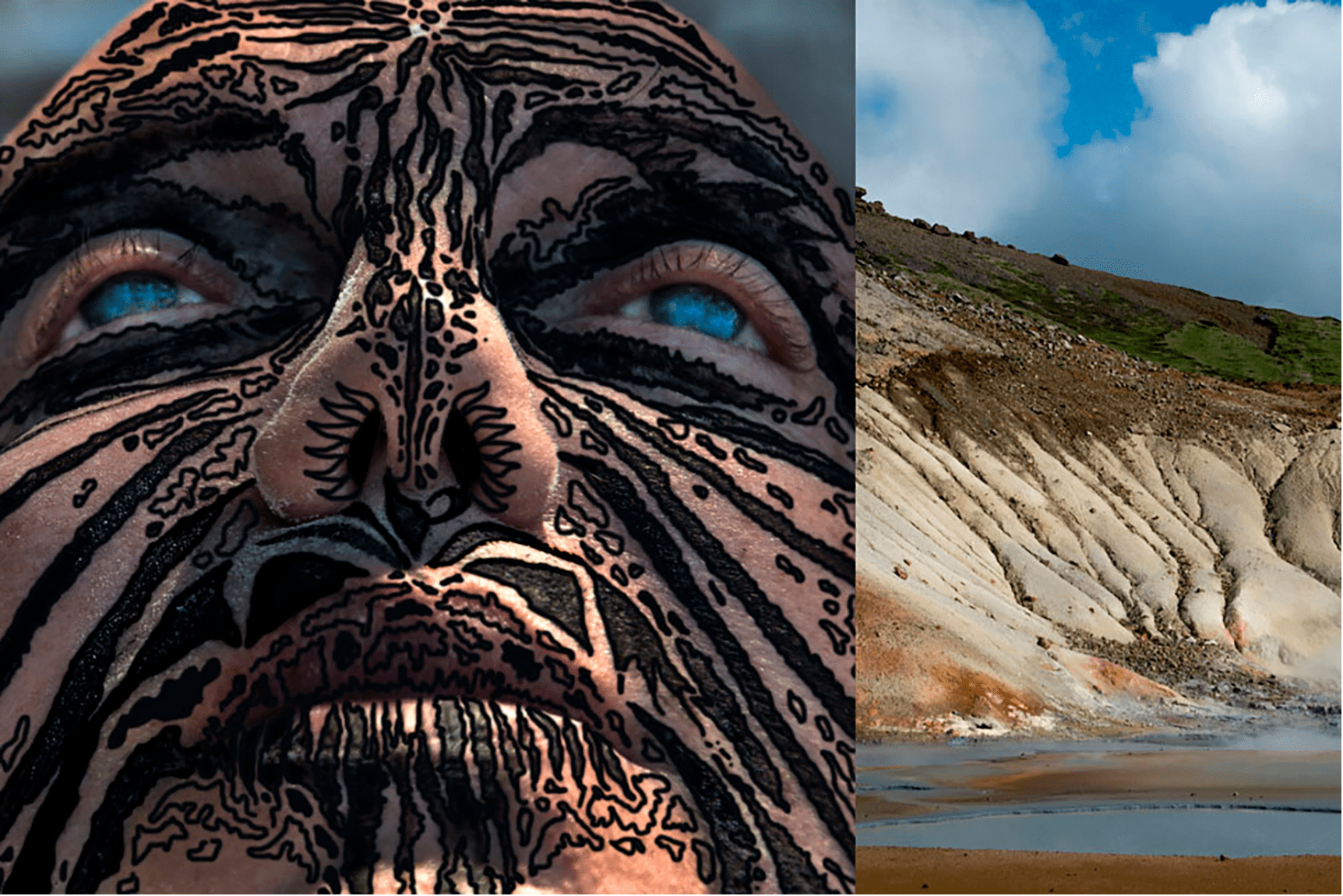


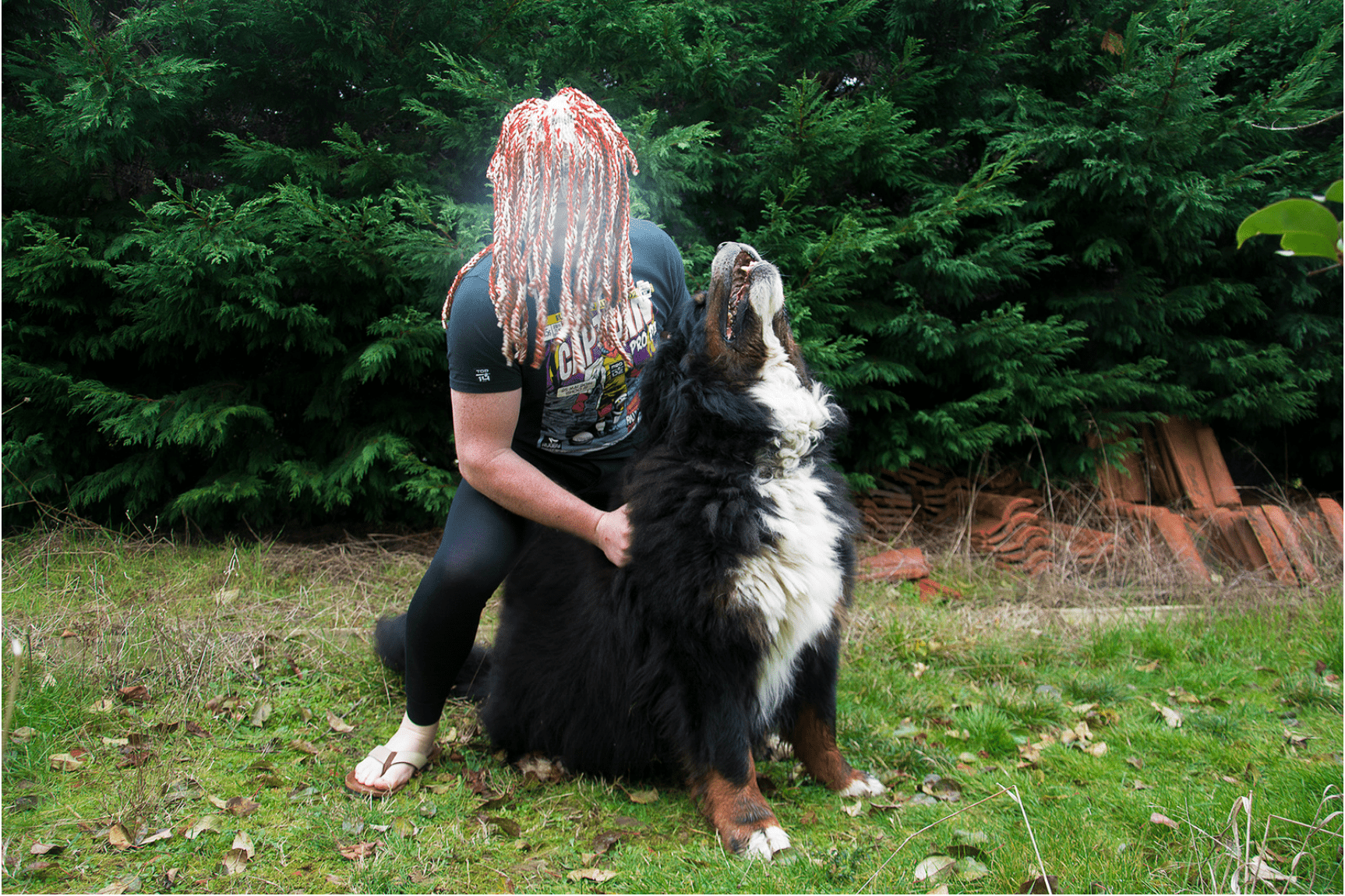

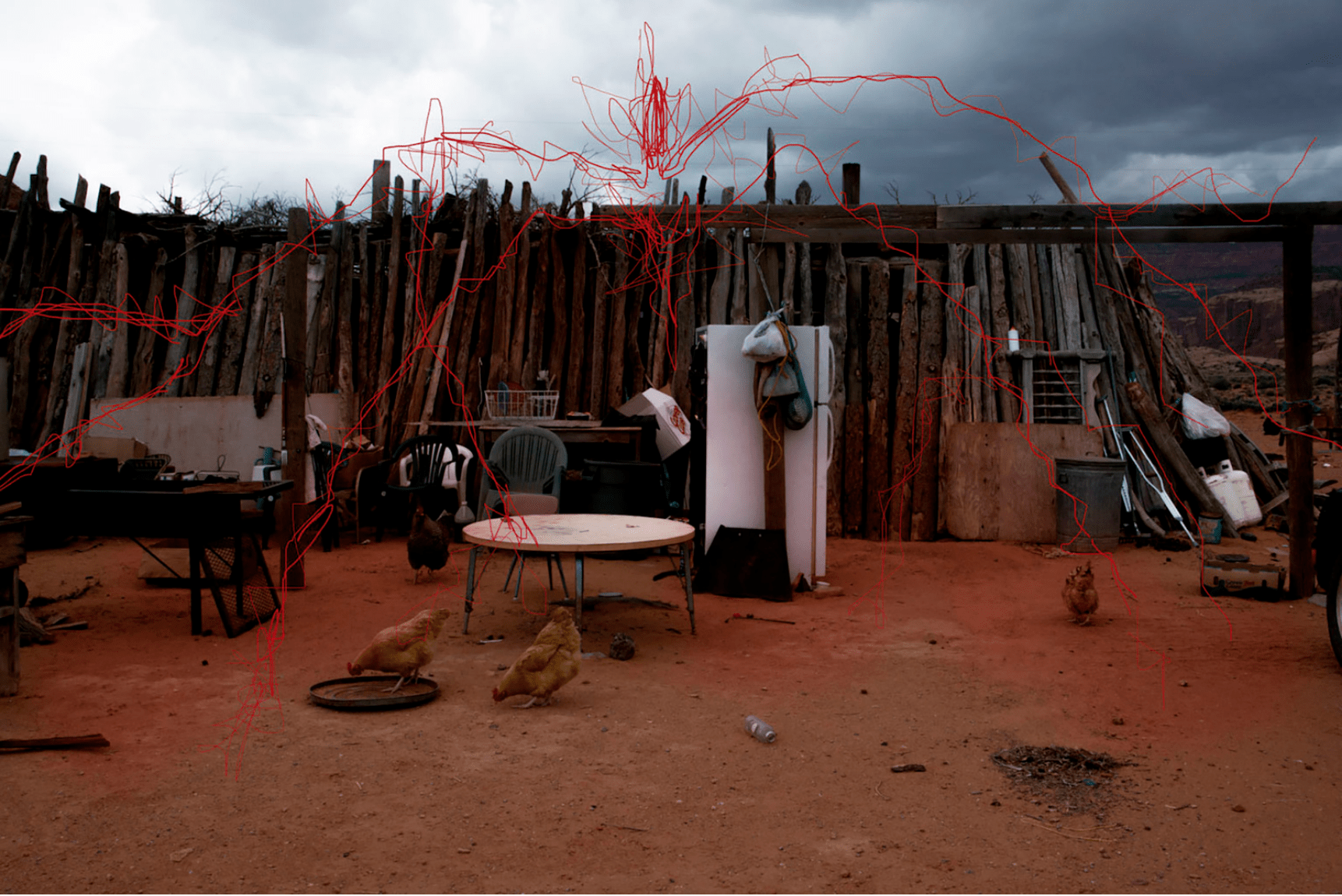
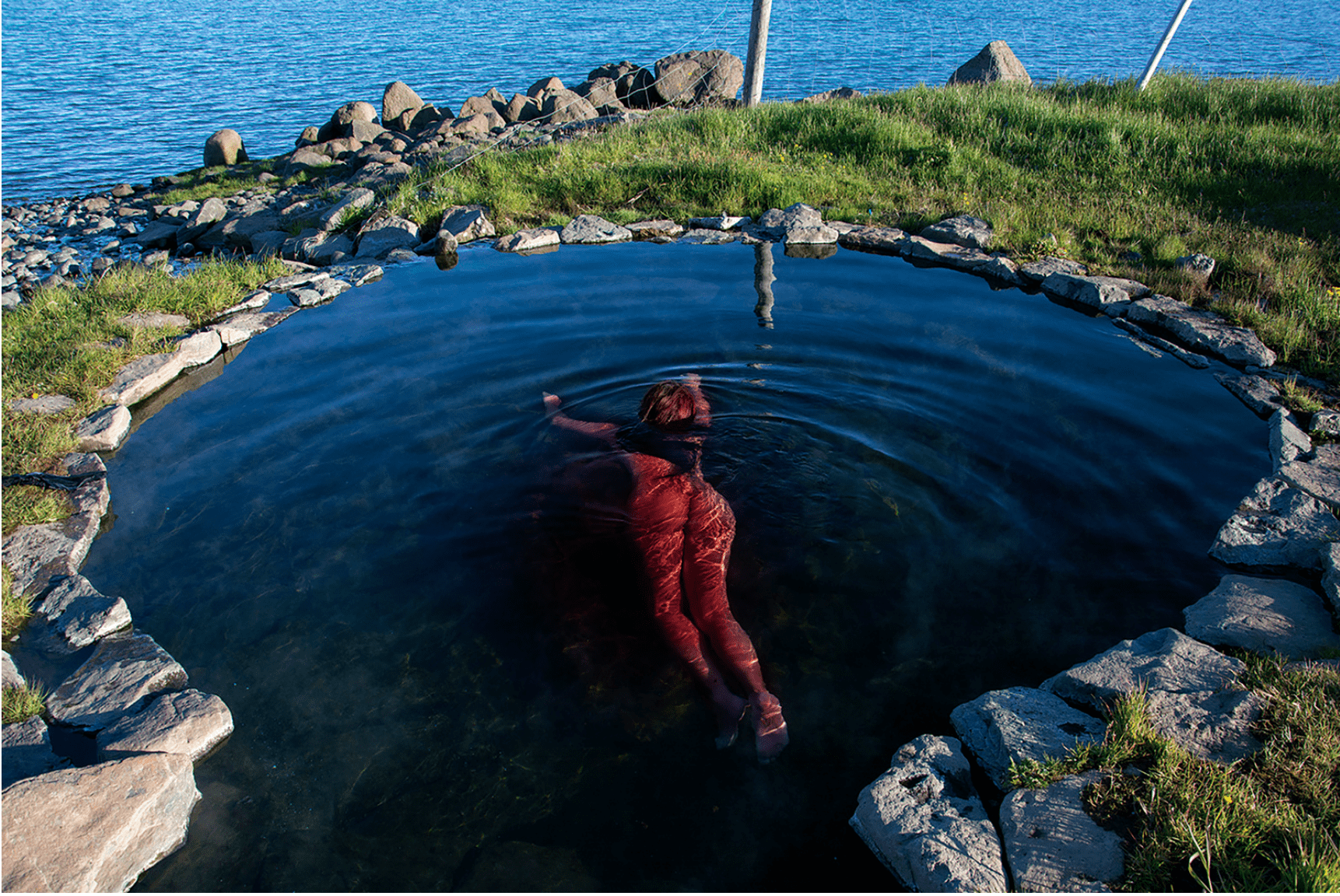

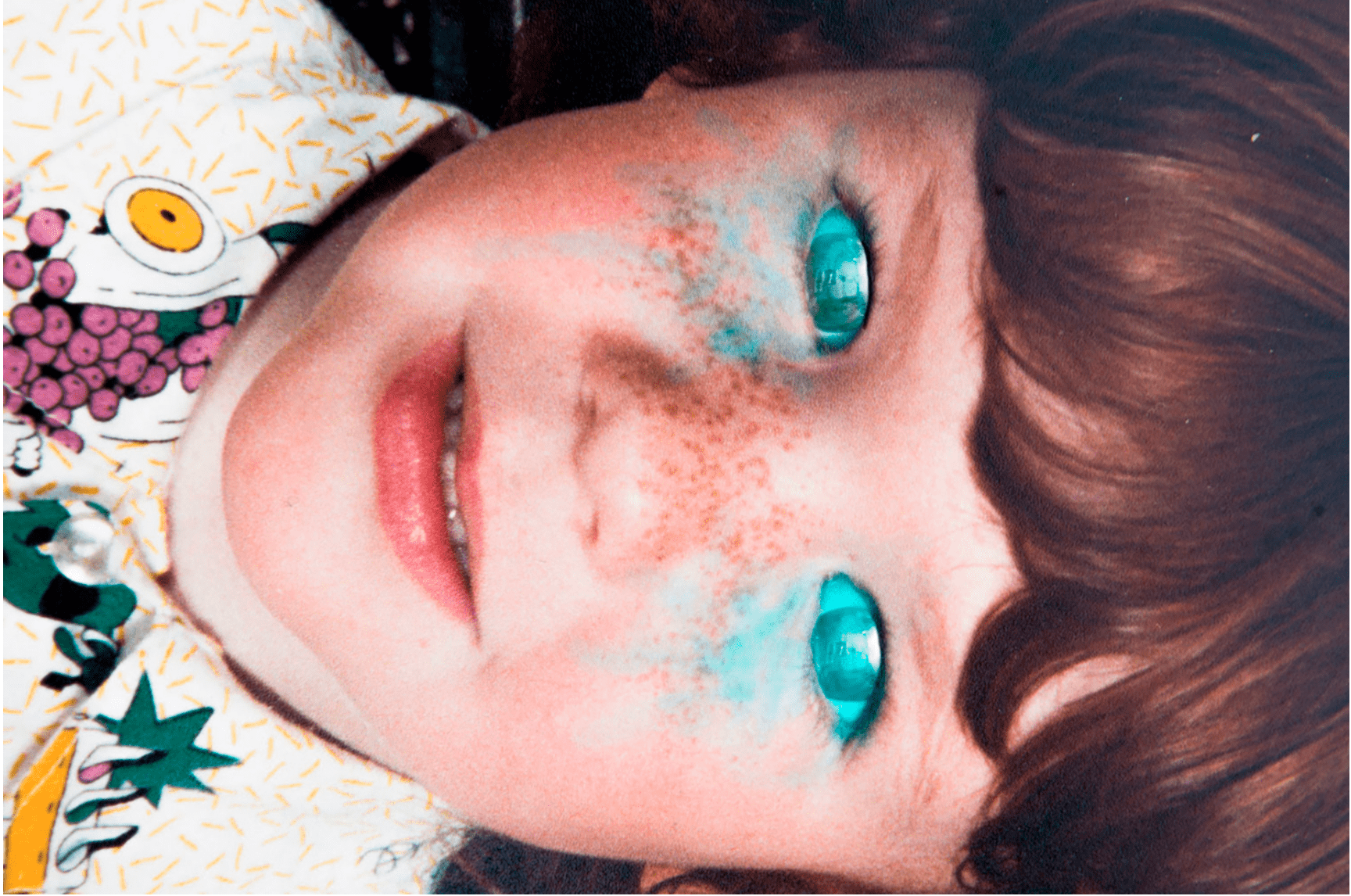
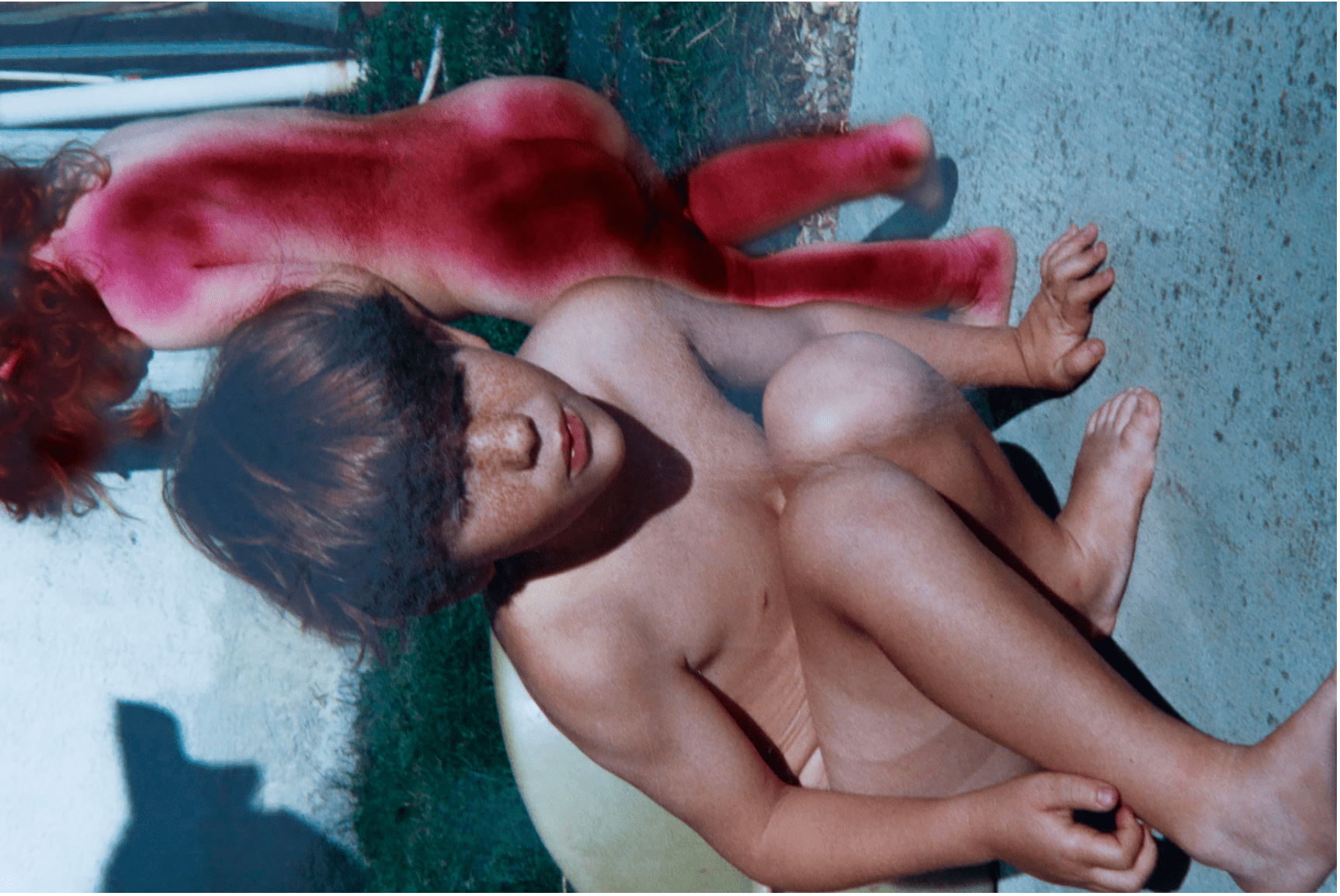

Liza Ambrossio (b. 1993, Mexico) lives and works between Madrid and Paris. She began her artistic practice in Mexico City at the age of sixteen, when she asked a housekeeper to steal photographs from family albums. Ambrossio portrayed her passage from adolescence to adulthood, with a strong desire to destroy the world she came from, a place that impedes people – especially females – to detach from the biological connection of their natural family.
By deconstructing her past, she rebuilds it by using fragments from her grim archive. This is almost a therapeutic and feminist act. In these moments, she discovers that the hell she holds inside is the same as outside and gives voice to the power of her imagination. In this context the first project was conceived, The Rage Of Devotion, which received worldwide recognition.
You are now working on a new project called Paranoid Sleep Psychosis, which you kindly decided to share with us. Could you tell us about it?
I am an artist who intends to free herself from the obligations of a genre, of age, of a culture, of a time, of a way of making art. This sense of freedom helps me to spit ideas that come to my mind before the images are made. My only responsibility is with my artwork and my greatest aspiration is to achieve the greatest freedom I can live with. This is the way I built my life and this text:
“I have the suspicion that to be truly free it is necessary to see your father die and kill your mother. Or was it the other way around? A section of my mind remains in the dark. My hands sweat, my throbbing accelerates, a chill runs through my body. I feel the anguish, temptation and desire of the one who has to commit a crime. Or has it already happened? I can’t look away. Everything is emotionally disconcerting, amorphous, strange (…) Am I haunted? Or am I the witch? My feet are burning.”
For me everything converges with a mental image: an orange that bleeds. Infected by the aesthetics of Japanese counterculture and the Aztec rituals of human sacrifice, I mix performance, intervention, videos, installations, psychological manipulation practices, science fiction, and witchcraft. Paranoid Sleep Psychosis is realized after years of a nomadic life in different countries that have allowed me to build a narrative based on my lucid nightmares and the hypothesis of a psychological syndrome that is self-styled as “Paranoid sleep psychosis” based on experiments and research of neuroscience and neurophysiology.
“I HAVE ALREADY THROWN EVERYTHING OVERBOARD: HONOUR, PRIDE, LOVE, SECURITY, HAPPINESS, EVERYTHING, TO BUILD MYSELF AS AN ARTIST.”
I believe that there are ways to demonstrate these inherited traumas through the genetic load that can be glimpsed in dreams and symptoms, or in apparently inexplicable diseases of the body, and it is possible to read the physical future and understand the behaviour of a person. All the decisions we made in the past, and even those of people from the same genetic line, have a consanguineous weight that leads us inexorably into the future.
Confronting the sense of uprooting and the need to connect with the deepest origins of humanity, I trace a narrative using the force of instinct and emotional survival in the framework of a world whose laws of life are equally marked by love and violence. A world where what’s felt and lived sometimes merges in a magical or tragic way. My universe is an affront to terror and dehumanization because according to me, passion is itself an act of defiance.
Both of your projects, Rage Of Devotion and Paranoid Sleep Psychosis, start with the same premise: the need to sublimate the emotional death that you decided to give your entire family to be able to cure yourself of the hatred, anger, and sadness you felt for the macho orthodoxy in which you lived during your upbringing, and the abrupt separation from your country, friends and loved ones.They both represent a ritual language that is convulsively expressed around change, evil and the cursed, mental illness, loneliness, freedom and destiny. In what do they differ? Do you intend to continue on this thread?
The words derail the image where a way of being is a way of seeing and a way of seeing is a way of being. Both projects are arteries of the same heart. It would be improper for me to separate from a state of obsession as it’s been the symbolic revenge against my mother in the last ten years of my life; or from the strong cultural criticism that I have against sexist education exercised throughout the world but especially in some Latin countries. Still, in some places, life for people who decide not to accept “the rules” can be complicated.
“I AM AN EXTREMELY RADICAL PERSON”
The Rage of Devotion is a project that started with me collecting photographs, stories known or written, of my ancestors. I’ve been counting for ten years but maybe I have been collecting since I was born, probably even since other past lives. This project is full of obsession and passion and, in that, there is only place for my own thoughts, opinions and criticisms towards my culture, my family, a world where other women also contribute to the oppression of others, a world of machismo, fear and anger. I discovered stories of other relatives, of murders committed in my family, bad thoughts, witchcraft, madness, terror and war. I was in a state of permanent pain. My adolescence and my first years as an adult were lived in depression and excesses with no apparent ending. I felt like I was over a hundred years old and my hair and skin ached from living it and telling it. In this sense, photography worked for me as a container where I poured most my history and that of my ancestors.
Paranoid Sleep Psychosis is a new project to which I have dedicated my last years of nomadism, starting from the moment I decided to stop being within the context that fed my fury. I am a human being full of obsessions related to the encounters and in search of my own demons. I don’t know why they have chosen me and in general I am too busy to ask. I am very ambitious; I have many distressing dreams that I need to free myself from. Until I meet any of my goals, I have no peace. I have already thrown everything overboard: honour, pride, love, security, happiness, everything, to build myself as an artist. I am depicting the most controversial divorce process I have had with my past. It is difficult to explain because there is no clear background in the current culture of the East or the West, but I believe that if your past, family or culture hurts you, it should be acceptable to divorce them as if it was a couple; so I decided to abandon everything when I self-exiled from my country to look for ‘me’ in other places.
Now I can say that I am following myself, because I am an extremely radical person. This work is a declaration of war against the established order and the social structures, essentially family, religions and the state of things.
I remember that when I arrived in Madrid (Spain) to study, I was always very angry because I felt I was living in a culture so similar to mine, just with a different accent; perhaps with greater security, but where I did not know anyone and things had not changed much. I was still living in a machismo, racist and classist culture, so I needed a more radical change.
Essentially, I have always felt uneasy within a culture. By “culture” I refer, in this case, to the term associated with Sigmund Freud, where the personal drives or desires are questioned compared to the context. Sometimes our context is not up to our desires and sometimes our diseases are not up to the context. So, I decided to make the best of my stay during the studies, at Barajas Airport (Spain) and go to the farthest countries from my primary culture.
For two years I travelled in Iceland, Norway, Denmark, Finland, Switzerland, Sweden, etc., trying to find ‘me’ in other cultures. It was essential for me to separate myself from what was burning in my body and what I found was a lot of loneliness, insights and the certainty that humanity is terrible but also deeply passionate. So, to answer your question, I think it’s necessary to continue with the same thread built upon my way of observing the world, the psychoanalytical approach of my own existence and the contexts in which I live.
“IT HAS BEEN VERY HARD FOR ME, FROM A VERY YOUNG AGE UNTIL NOW, TO DISTINGUISH REALITY FROM FICTION.”
In your statement you talk about lucid nightmares, free science fiction, and witchcraft associations. Could you tell us a bit about the process of image and artmaking, starting from the thought and ending with the final result?
Let’s say that when I was a little girl still in my crib, I had a problem getting up to go to the bathroom because I was afraid of the imaginary monsters that I assumed were real; this is what I call “Lucid Nightmares”. It has been very hard for me, from a very young age until now, to distinguish reality from fiction, like a dream of awakening. I have a powerful imagination. One day, while watching lots of green hands leaving the floor of my room, I decided to make an agreement with them and ask them to let me cross the room. If that had happened, I wouldn’t have bothered them anymore during my hours of rest. My life has been a process of agreements and I think the images were already made in my mind, before I was a photographer or performance artist, writer, videographer or a bad painter.
While you seem to have already found your own visual language and aesthetics, it’s possible to identify some art references and influences in your work. For example, Salvador Dalí, one of the main representatives of the surrealism movement. He tried to capture the hallucinatory clarity of dreams, proposing a state of mind that would be permanently disoriented. How do you relate to him and the other surrealists, and what are the references that have strongly influenced what you do as an artist?
I am almost certain that there is no western kid who hasn’t been fascinated by Dalí at some point in their lives. I am a girl from the 90s, and for me he was a cartoon coming true. I remember that when I was old enough to differentiate temporalities, I was disappointed that he had been dead since before I was born; I believed that one day he could fall in love with me and I would reject his love, just to be mean or to annoy him. I know this is nonsense.
Surrealism is something that particularly flourished in my home country (Mexico) because people are very fanatic. André Breton fell in love with those crazy people, he decided to design a palace in the middle of the Jungle in Xilitla, Mexico and spread their ideas. We also have Frida Kahlo, the most famous painter in the world; the witchcraft culture on the coast of Veracruz; the magical realism of Gabriel Garcia Marquez, who died in my hometown; and Juan Rulfo with his Pedro Paramo, among a number of great painters, writers, and more.
“MEXICAN CULTURE IS RICH NOT ONLY WITH TACOS, HATS AND TEQUILA; IT IS ALSO A PLACE WHERE ART FLOURISHES RELATIVELY EASILY”
It is inevitable to return to the idea that we all come from a cultural background that precedes us and the Mexican culture is rich not only with tacos, hats and tequila; it is also a place where art flourishes relatively easily, because there is a lot of competition between 129 million people always eager to demonstrate the strength of their culture. I guess I have been influenced by those great artists, but also by much more contemporary human beings like H.P. Lovecraft, Alejandro Jodorowsky, Francis Bacon, F.W. Murnau, Roman Polanski, David Cronenberg, Luis Buñuel, William Burroughs, Emmanuel Lubezky or Goya.
Apart from your personal life events and the use of art and photography to deal with and interpret your own demons, does your research have the ambition to also have an impact on people’s views in relation to political or social issues? If so, which ones and in what way?
My universe incorporates symbols alluding to witchcraft that mixes with my written narrative, photographs, installations and videos that are united by free association, driven by the theories on psychological manipulation and its influence on the continuation or rupture of the power professed by different social structures. I also seek in my work the exercise of sinister freedom that has a strong relationship with chance and instinct, and involves the destabilization of female canons that threaten the possibility of exceeding the ethnic, sexual, moral, religious and political limits.
It is a universal truth that we are all political beings and I believe that my greatest political contribution to date has been to put the animal, the vegetable, the feminine, and the masculine in the same margin of capacity for violence, destruction, and construction through my stories and how I involve my life in them.
Could you think of some secrets and special suggestions to give to young and aspiring photographers?
I don’t like to give advice because I consider myself a young photographer, I’m 26 years old and I’m not sure if human beings become aware of who we are, before a certain age, if ever. Human beings live in a permanent existential crisis; our mental capacity is fragile. Although, I think we all have an innate ability to make mistakes, do things wrong. In any case, I would say that “young art” or “old art” does not exist. They are a deformation of critics, curators or art historians. What exists is art that transcends the existence of its own creator, and for that to happen, there must be a lot of work, the ambition to find your own style, passion, emotion and a total commitment to the religion of art.